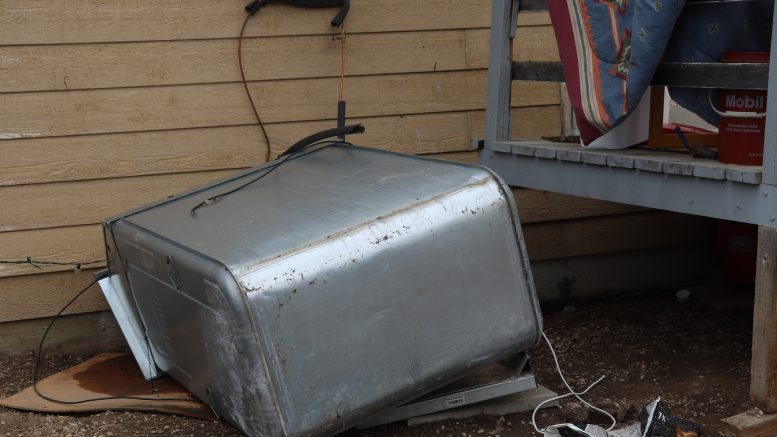Melania Norwegian, a resident of Tthek’éhdélį First Nation (Jean Marie River), fears the territorial government isn’t addressing her community’s needs with urgency.
She worries those displaced will not have a home by next winter.
CKLB spoke with Paulie Chinna, minister of Municipal and Community Affairs (MACA), on Tuesday.
When asked if Chinna could commit that all displaced residents would have a home by then, she wouldn’t say.
“I want to make sure that, we do meet the needs of the affected residents in these communities,” she said, adding there is a lot of work being done between MACA and the housing corporation.
The Disaster Assistance Policy
Chinna says the territorial government is sending a request for funding to the federal government on behalf of the flood victims through the Disaster Financial Assistance Policy.
This is where the assessors come in, to provide the GWNT with an estimate on the damage costs.
Chinna told CKLB she is unsure of how long the assessment will take.

Flooding devastated the community of Jean Marie River First Nation in May 2021. (Photo by Luke Carroll/ CKLB.)
Jean Marie River was devastated by flooding in May, which left the majority of homes and infrastructure severely damaged. Oil from tanks leaked into the ground creating a major fire risk in some areas and the smell of sewage was overwhelming in many homes.
The rebuilding effort is a point of confusion as Norwegian says it’s unclear how residents will get the money to begin the work. It is unclear if residents should start repairing their homes with their own finances and await reimbursement, but Norwegian says that wouldn’t be an option for many people even if that is the plan.
“People in a small community like this, that live on old age pension, income support, and on a fixed income,” she says. “Where do they come up with the extra money?”
Residents of Jean Marie River aren’t alone in the confusion as Dennis Nelner, a resident of Fort Simpson, told CKLB last week he was equally confused.
Chinna said to combat the confusion, a navigator arrived in both Fort Simpson and Jean Marie River this week to help with the process.
“They are there to gather the information to work with local leadership, and provide what is required by the residents in order for us to complete and submit this application as a government,” Chinna says.
Chinna echoed her message from Monday in the Legislative Assembly when asked if there was going to be any direct financial assistance, saying the focus remained on getting people back in their homes.
“I don’t have an answer for … the basic needs of food and clothing for the individuals,” she told her fellow MLAs.
She added that disaster relief centres are still open in Fort Providence and Inuvik, providing free meals to victims.
Going forward
Norwegian said she hopes the government can provide temporary housing for the displaced residents in Jean Marie River.
“People want to come home,” she says, “they don’t want to be all over the place.”
She recommended the GNWT set the residents up in RV’s or other temporary shelters in the community.
Chinna said this is being discussed, but there are obstacles.
“We’re looking at replacements as well for the public housing units by looking at modular units and builds to come into these smaller communities as well,” she said. “It really depends on the timing of these units and when they will be available to be delivered to the Northwest Territories, and also recognizing that we are working within COVID.”
When asked about the possibility of moving the communities to higher ground or paying out those with homes in flood risk zones, Chinna said the department’s immediate priority is on rebuilding.
Jean Marie River council requested the Disaster Assistance Policy on May 18.
Chinna said the current state of the repairs includes the removal of drywall and insulation to prevent mold buildup.
Brett McGarry contributed reporting.





